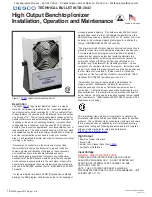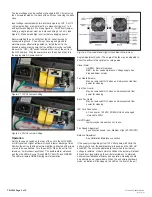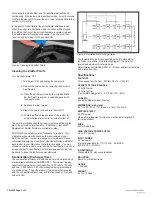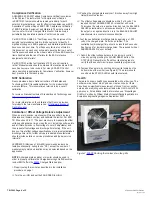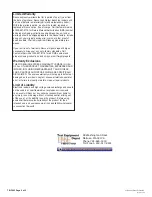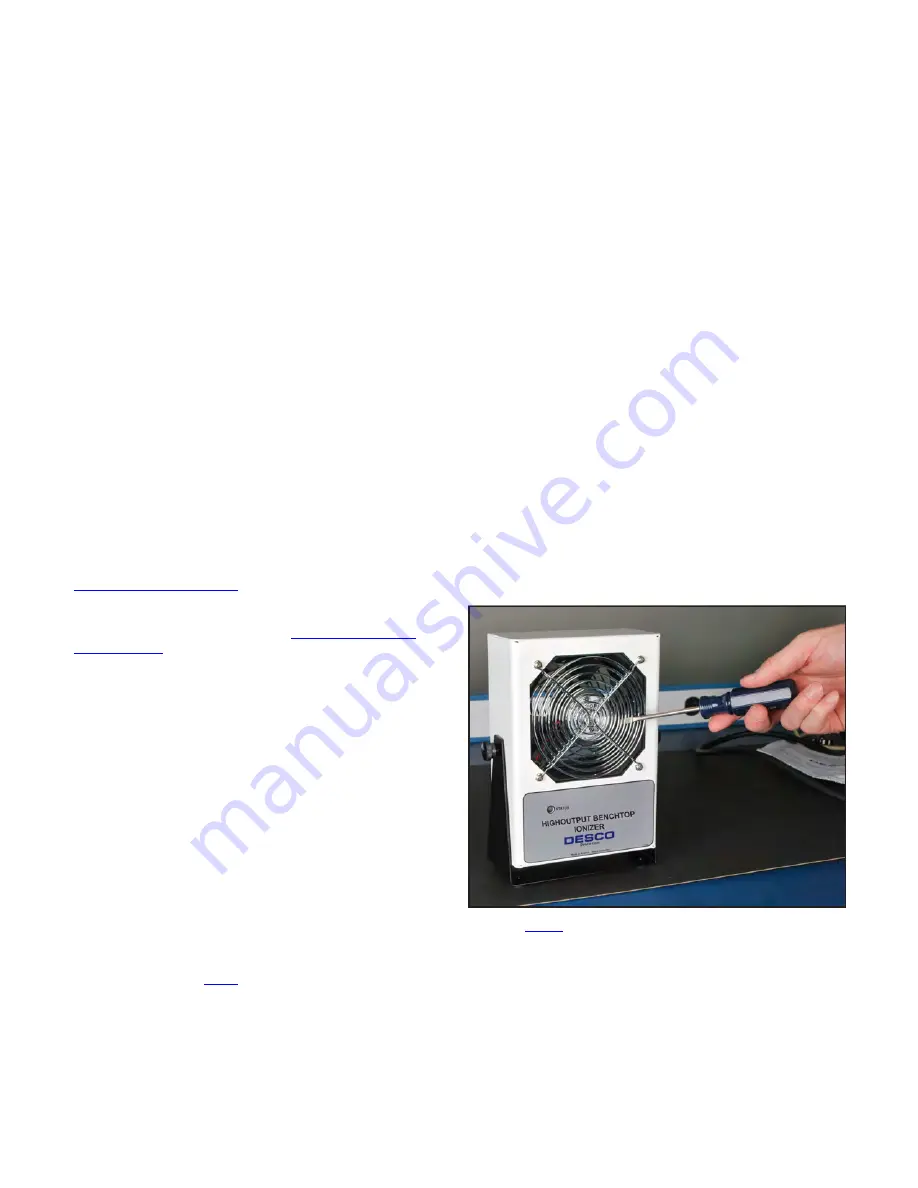
TB-3043 Page 4 of 5
© 2009 DESCO INDUSTRIES, INC.
Employee Owned
Compliance Verification
ANSI/ESD S20.20-2007 added Compliance Verification columns
to the Tables. The test method for Compliance Verification
is ESD TR53. Ionizers should be tested periodically for both
polarity’s discharge times, and for offset voltage balance per ESD
Association Technical Report ESD TR53 Compliance Verification
of ESD Protective Equipment and Materials. The most accurate
tool to use for this is a Charged Plate Monitor. Alternatively, a
portable battery operated Ionization Test Kit can be used.
Per ESD TR 53 ANNEX A “Test Frequency, The objective of the
periodic test procedures listed in this document is to identify if
significant changes in ESD equipment and materials performance
have occurred over time. Test frequency limits are not listed in
this document, as each user will need to develop their own set of
test frequencies based on the critical nature of those ESD sensitive
items handled and the risk of failure for the ESD protective
equipment and materials.”
Per ESD TR53, all the test locations of S3.1 are not required;
rather “Measurements should be made at the location where ESD
sensitive items are to be ionized. For many EPA ESD Control
items sampling is appropriate for Compliance Verification, however,
best practice is to test each ionizer.
NIST Calibration
Desco provides a basic, National Institute of Standards and
Technology (NIST) traceable calibration for the products that
we manufacture. This is sometimes referred to as a Level 1
calibration.
For more on National Institute of Standards and Technology see:
http://www.nist.gov/index.html
For more information on the calibration that Desco’s provides
for products that we manufacture see:
Calibration.aspx
Calibration / Offset Voltage Balance Adjustment
When an alarm sounds, most users will clean emitter pins (see
Maintenance / Alarms section) and calibrate the ionizer. Per ESD
TR 53 section 5.3.6.7.1 “The best practice is to measure the offset
voltage and discharge times, clean the unit, including emitter points
and air filters if present, offset voltage to zero (if adjustable), and
then repeat offset voltage and discharge time testing. If the unit
does not meet offset voltage specifications or minimum established
discharge time limits, further service is indicated. Manufacturers
should provide details on service procedures and typical service
intervals.”
JESDD625-A (Revision of EIA-625) recommends ionizers be
tested semiannually, noting to use “S3.1 except the number of
measurement points and locations may be selected based on the
application.”
NOTE
: A charged plate analyzer or monitor should be used in
order to properly calibrate the Chargebuster High Outfit Benchtop
Ionizer.EMIT offers the
50555
Charged Plate Analyzer.
I. Properly setup the ionizer as described in the Installation
procedure on page 1.
II. Turn the unit ON and set the FAN SPEED to HIGH.
III. Position the charged plate analyzer 18 inches away from High
Output Benchtop Ionizer.
IV. The offset voltage balance should be within 0 ±15 volts. The
required limit per ANSI/ESD S20.20 is less that ± 50 volts.
To increase the output in a postive direction, turn the BALANCE
ADJUST potentiometer in a clockwise direction. To increase
the output in a negative direction, turn the BALANCE ADJUST
potentiometer in a counter clockwise direction.
V. Test the neutralization discharge time by applying a ±1,000
volt on the charged plate. Do both ± polarities. The
neutralization (discharge) time should be less than 3 seconds.
See figures 4 for typical discharge times. The required limit per
ANSI/ESDS20.20 is “user defined”.
VI. Submit the offset voltage balance to the ionizer’s control
circuit by quickly pressing the ALARM RESET button. The
STATUS LED should turn off and then illuminate green to
verify that the control circuit was successfully programmed.
VII.Test each fan’s alarm by shorting its two grills located on the
bottom side of the ionizer (see Figure 8). The alarm should
sound and the STATUS LED should illuminate red.
Health
There are no known health risks associated with our devices. The
emitters work at about 4-6 kV and can create ozone, but there
have been no significant measurement of ozone from our emitter
sets as all our existing units test well below the OSHA limit of 0.05
ppm ozone. For additional safety information, see “Dispelling an
Old Myth” written by William Metz of Hewlett-Packard published in
Evaluation Engineering magazine September 2001.
Figure 7.
60505
Shorting the Ionizer’s two fan grills
© 2010 DESCO INDUSTRIES INC.
Employee Owned

